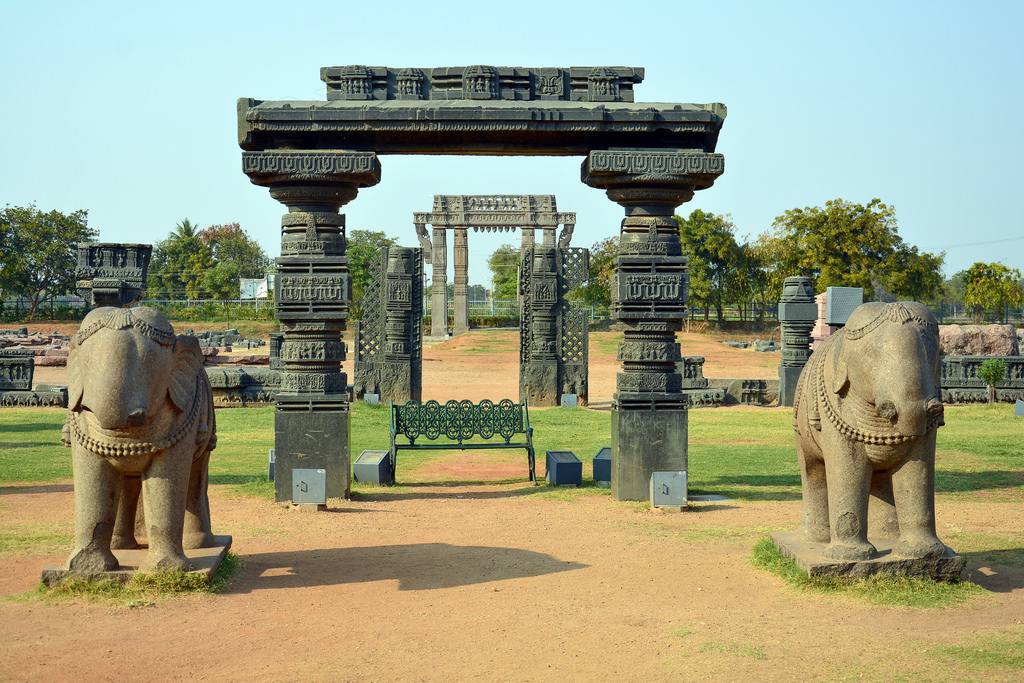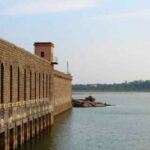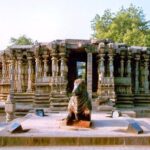Warangal Fort is a magnificent historical monument situated in the city of Warangal, Telangana, India. It was originally built in the 13th century by the Kakatiya dynasty, which ruled over the region from the 12th to the 14th century. The fort is an impressive example of the architectural and engineering skills of the Kakatiya rulers, who were known for their patronage of art and culture.
Architecture & Construction
Warangal Fort, also known as Orugallu Fort, was built in the 13th century by the Kakatiya dynasty, which ruled over the region from the 12th to the 14th century. The fort was constructed as a defense against invading armies and was also used as the residence of the Kakatiya kings. The fort was strategically located on a hilltop, overlooking the city of Warangal.
The Kakatiya rulers were known for their patronage of art and culture, and the fort is a reflection of their architectural and engineering skills. The fort is spread over an area of about 19 km² and is surrounded by a moat that was once filled with crocodiles. The fort had four gateways, of which only the eastern gateway, known as the Kirti Thoranam, still stands today. The Kirti Thoranam is a beautiful arch made of granite and is considered to be the symbol of Warangal.
The fort is made of granite blocks and is constructed in a unique style of architecture known as the Kakatiya style. The Kakatiya style is characterized by the use of stone, brick, and lime mortar, and the use of intricate carvings and sculptures. The fort has many features that were designed to make it impregnable, such as the use of double walls and intricate water systems.
One of the most impressive structures within the fort is the Thousand Pillar Temple, which was built in the 12th century. The temple is dedicated to Lord Shiva, Lord Vishnu, and Lord Surya, and is known for its exquisite carvings and sculptures. The temple is made of black basalt and has 1,000 pillars, each of which is unique in design and structure.
Another notable feature of the fort is the Warangal Gate, which was built in the 12th century and is one of the finest examples of Kakatiya architecture. The gate is made of stone and has intricate carvings and sculptures depicting scenes from Hindu mythology.
Today, the Warangal Fort is a popular tourist destination and is visited by thousands of people every year. The fort has been declared a UNESCO World Heritage Site and is considered to be one of the most important historical sites in India. Visitors can explore the various temples, gates, and other structures within the fort and get a glimpse into the rich cultural heritage of the Kakatiya dynasty.
Timings of the Warangal Fort
The Warangal Fort is open to visitors every day of the week from 10:00 AM to 5:00 PM. The fort can be visited throughout the year, but it is best to avoid visiting during the hot summer months of April to June. The best time to visit is during the winter months of November to February when the weather is pleasant and ideal for sightseeing. However, it is recommended to check the timings and schedule of the fort before planning a visit, as they may vary depending on the season or any special events or occasions.
Location of the Warangal Fort
The Warangal Fort is located in the city of Warangal, in the Indian state of Telangana. The fort is situated in the heart of the city and is easily accessible by road. The nearest airport is the Rajiv Gandhi International Airport in Hyderabad, which is approximately 150 km away from Warangal. The city is also well-connected by rail and road networks, and there are several buses and trains that run from major cities in India to Warangal. Once visitors reach the city, they can hire a taxi or take a local bus to reach the fort. The fort is located near the Bhadrakali Temple, and there are several other historical monuments and tourist attractions in the vicinity that visitors can explore.
Entry Fee
As of my knowledge cutoff of September 2021, the entry fee for the Warangal Fort is INR 15 for Indian citizens and INR 200 for foreign nationals. There may be additional charges for photography and videography. However, it is recommended to check the current entry fee and any other charges before planning a visit, as they may be subject to change. Additionally, there may be separate fees for visiting specific structures within the fort complex, such as the Thousand Pillar Temple.
Nearest Places to Visit
- Thousand Pillar Temple: Exploring the Grandeur & History of Temple -India’s Most Iconic Heritage Site. Thousand Pillar Temple was built during the 12th century by the Kakatiya dynasty and is known for its unique architecture.
- Kakatiya Rock Garden: A picturesque garden that features stunning rock formations and beautiful waterfalls.
- Bhadrakali Temple: The Bhadrakali Temple is another famous Hindu temple located about 4 km from the Padmakshi Temple. An ancient temple dedicated to the Hindu goddess Bhadrakali, with beautiful architecture and serene surroundings.
Warangal Fort is an impressive example of the architectural and engineering skills of the Kakatiya rulers. Its intricate design and historical significance make it a must-visit destination for anyone interested in Indian history and culture. So, it has become one of the most visited tourist attractions in Warangal.



